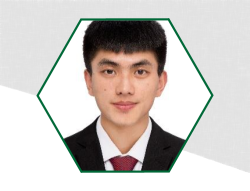Dissimilar laser welding of Al-Cu has garnered significant attention in electric vehicle (EV) battery manufacturing. Adjustable-Ring Mode (ARM) laser technology, in conjunction with a Beam Oscillation optics module, has been employed to enhance the quality of welds in Al-Cu alloys. The significant thermal gradient, induced by the rapid cooling and heating during the welding process, combined with the disparate thermophysical properties of the materials, leads to severe localized thermal stress concentrations within the weld beads. In this study, a three-dimensional (3-D) thermo-mechanical finite element (FE) model was developed to analyze the residual stress distributions of laser-welded Al-Cu overlapped joints. The accuracy of the model was validated through comparisons with experimental weld cross-sections and further substantiated by X-ray diffraction measurements. Utilizing this validated FE model, the transient temperature field and thermally induced stress evolutions throughout the welding process were examined in detail. Furthermore, the microhardness and microstructure of the welded specimens were assessed via micro-hardness tests and scanning electron microscopy, respectively. The results indicated that the highest concentrations of residual stresses were located at the weld seam, characterized predominantly by tensile longitudinal residual stress and compressive transverse residual stress. The study also revealed that varying the power ratio between the core and ring laser power, along with the application of beam oscillation, had a significant impact on weld penetration and microstructure.
Keywords
- Adjustable-Ring Mode
- Beam Oscillation
- Dissimilar Joint
- Finite Element Model
- Laser Welding

